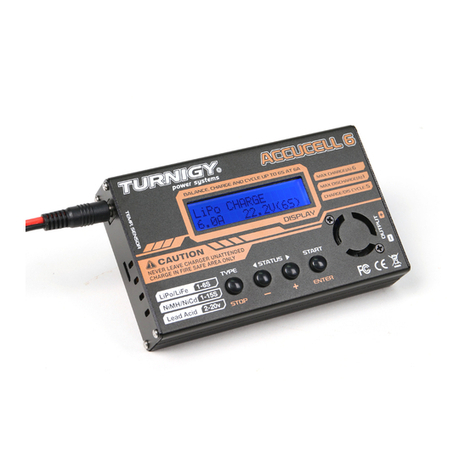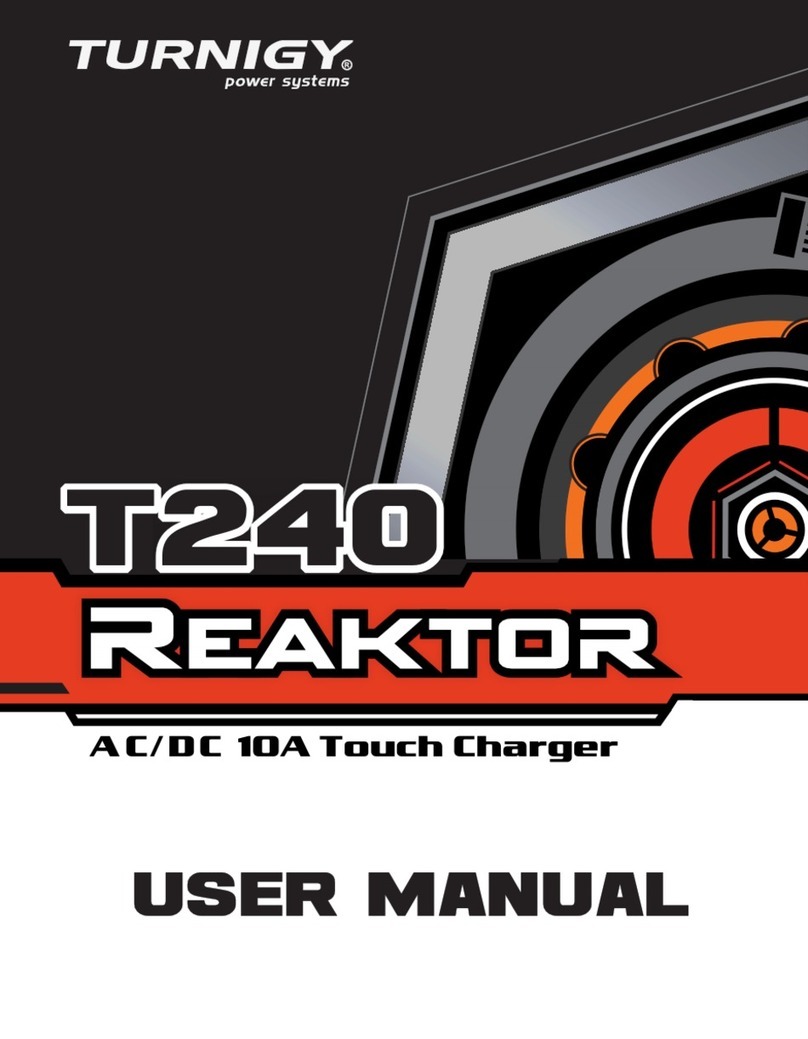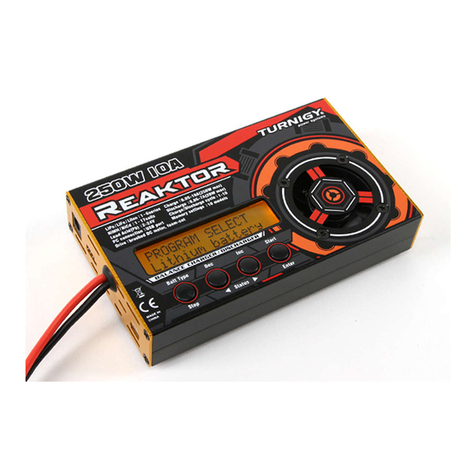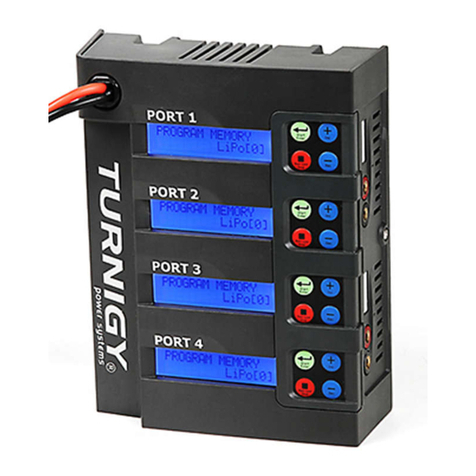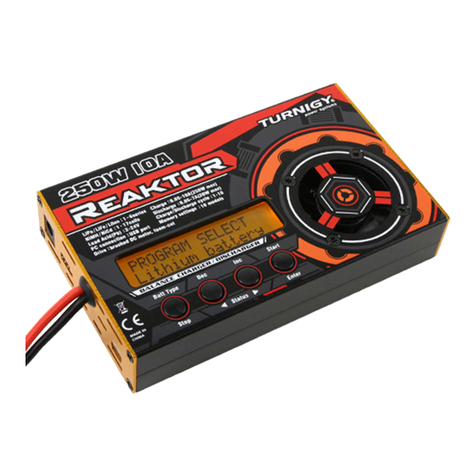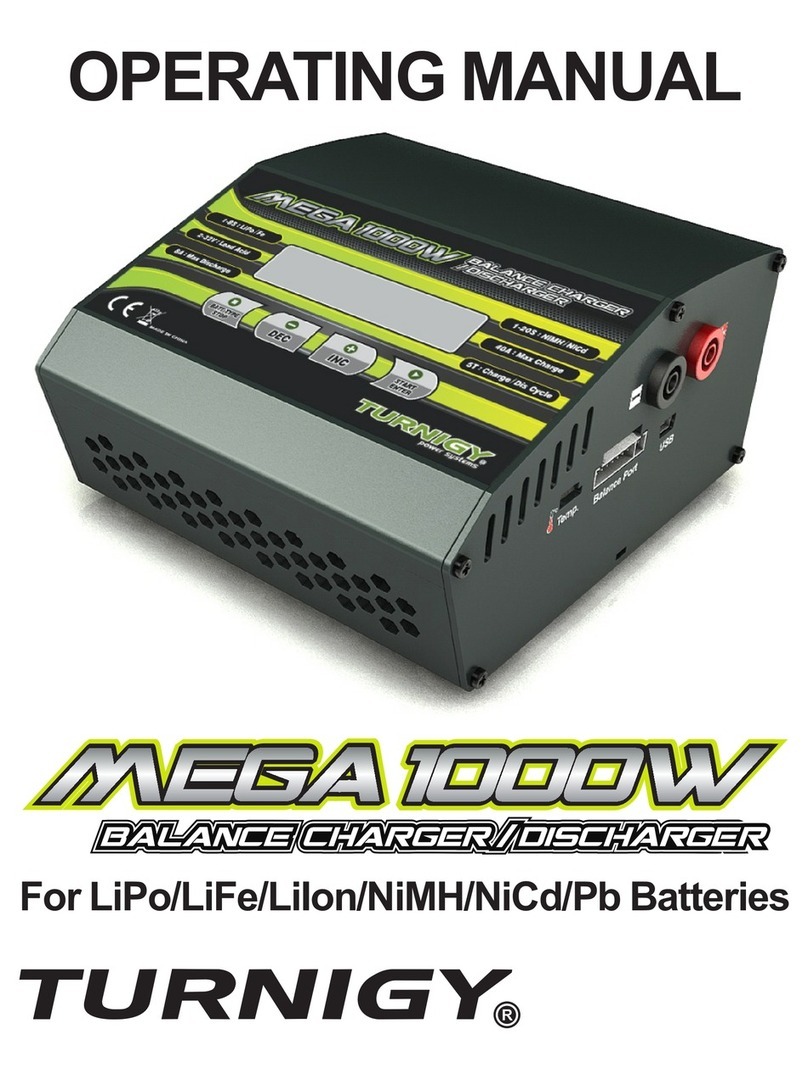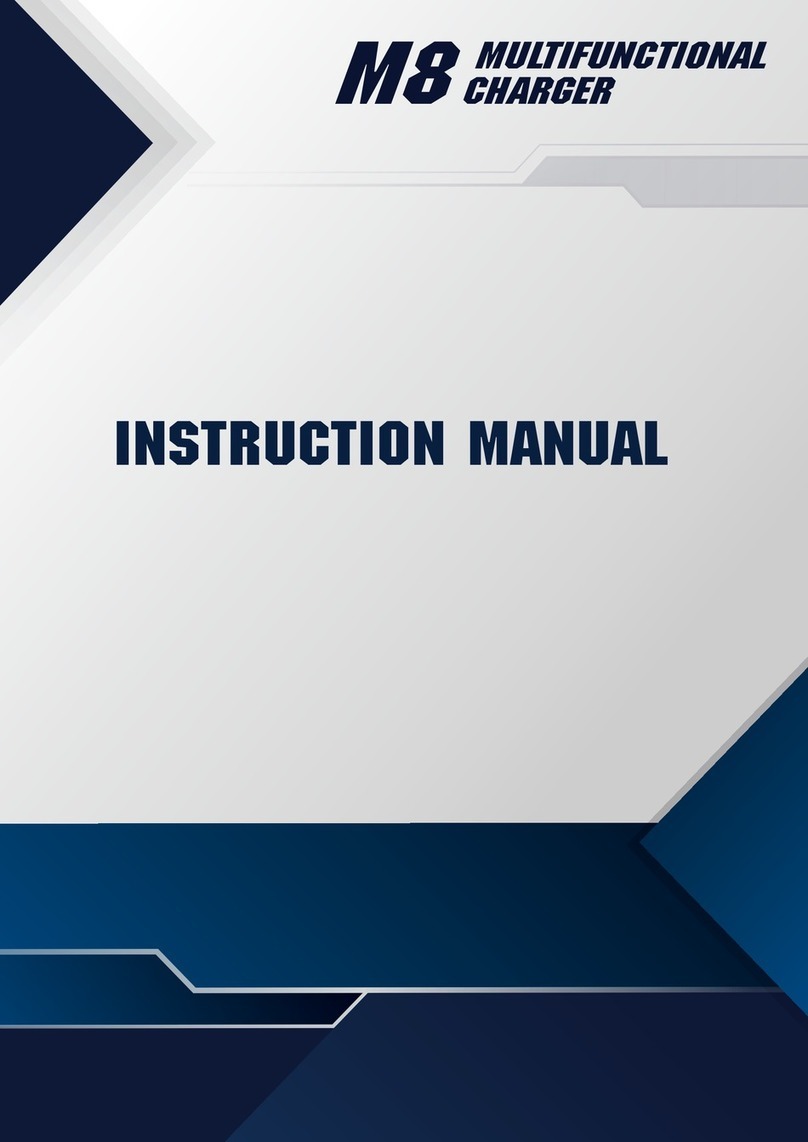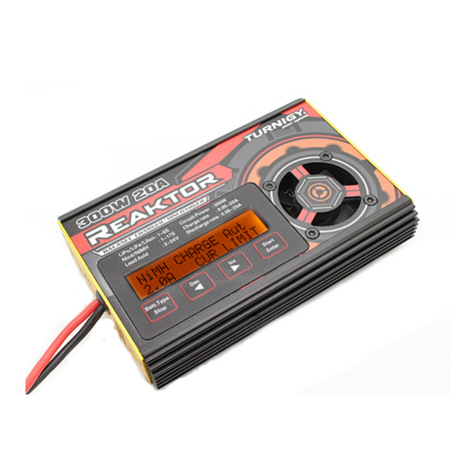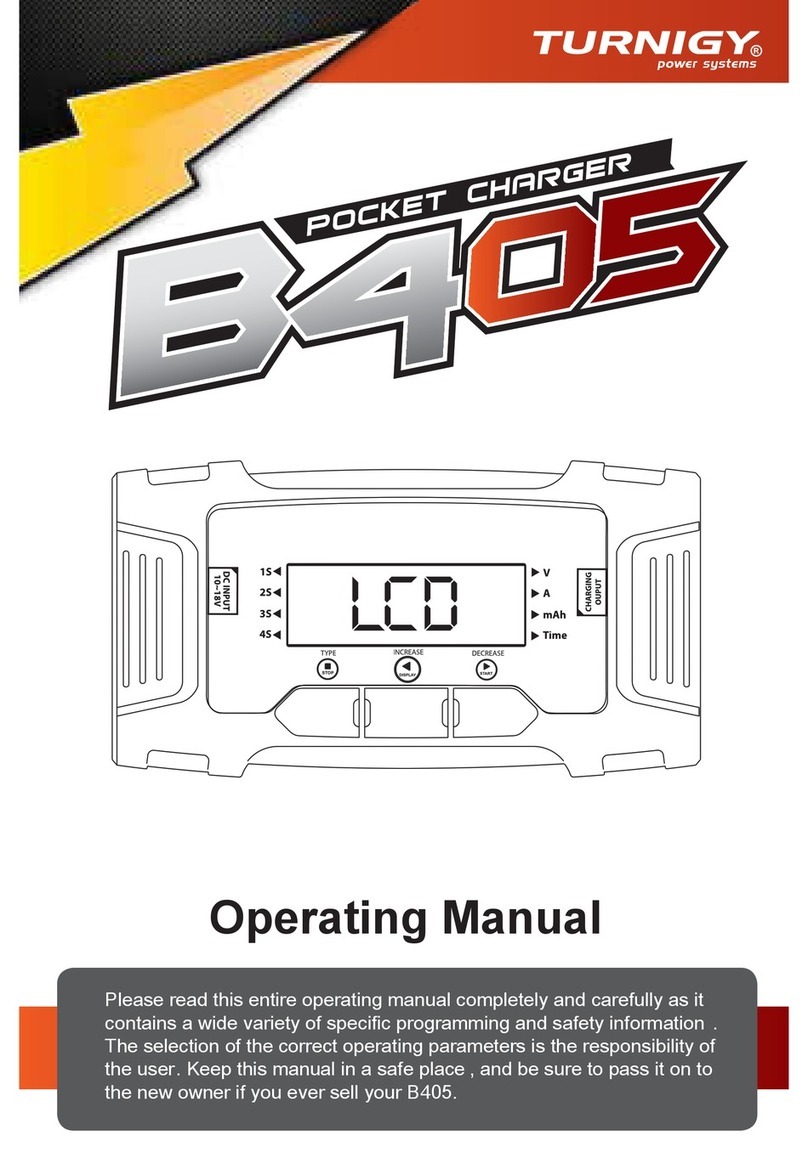- Batteries that require a different charge technique from NiCd, NiMH, Lilo, LiPo, LiFe
or Pb.
- Faulty or damaged battery.
- Battery fitted with an integral charge circuit or a protection circuit.
- Batteries installed in a device, or which are electrically linked to other components.
- Batteries that are not expressly stated by the manufacturer to be suitable for the
currents the charger delivers during the charge process.
Please bear in mind of checking the following point before charge operation.
- Did you select the appropriate program, which are suitable for the type of battery?
- Did you set up adequate current for charging or discharging?
- Lithium battery pack can be composed with parallel and series circuits mixed. You
have
to check the composition of the battery pack carefully before charging.
- Are all connections firm and safe, or is there an intermittent contact at any point in
the circuit?
Charging
A specific quantity of electrical energy is fed into the battery during charge process.
The charge quantity is calculated by multiplying charge current by charge time. The
maximum permissible charge current varies according to the battery type or its
performance, and can be found in the information provided by the battery
manufacturer. It is only allowed to charge batteries at rates higher than the standard
charge current if they are expressly stated to be capable of quick-charge.
Connect the battery to charge to output terminal of the charger using suitable charge
lead. They are red, positive(+)and black, negative(-).Since the charger cannot detect
the difference between the internal resistance of the battery pack, cable resistance
and connector transfer resistance, the first requirement if the charger to work
properly is that the charge lead should be of adequate conductor cross-section. And
also high-quality connectors (normally gold-contact type) must be fitted to both ends.
- Refer to the information provided by the battery manufacturer regarding charging
methods, and verify the recommended charge current and charge time.Especially for
Lithium batteries, you have to follow the charge instruction provided by the
manufacturer strictly.
- Do not attempt to disassemble the battery pack arbitrarily.
You have to pay attention to verify the capacity and the voltage of the Lithium battery
pack. It may be composed of parallel and series connection mixed. In parallel link
the capacity of the battery pack is multiplied by the number of cells but the voltage
remains same. That kind of voltage imbalance causes a fire or explosion during
charge process.
We recommend you compose the Lithium battery pack in series only.
-6-
3. Warnings and safety notes
